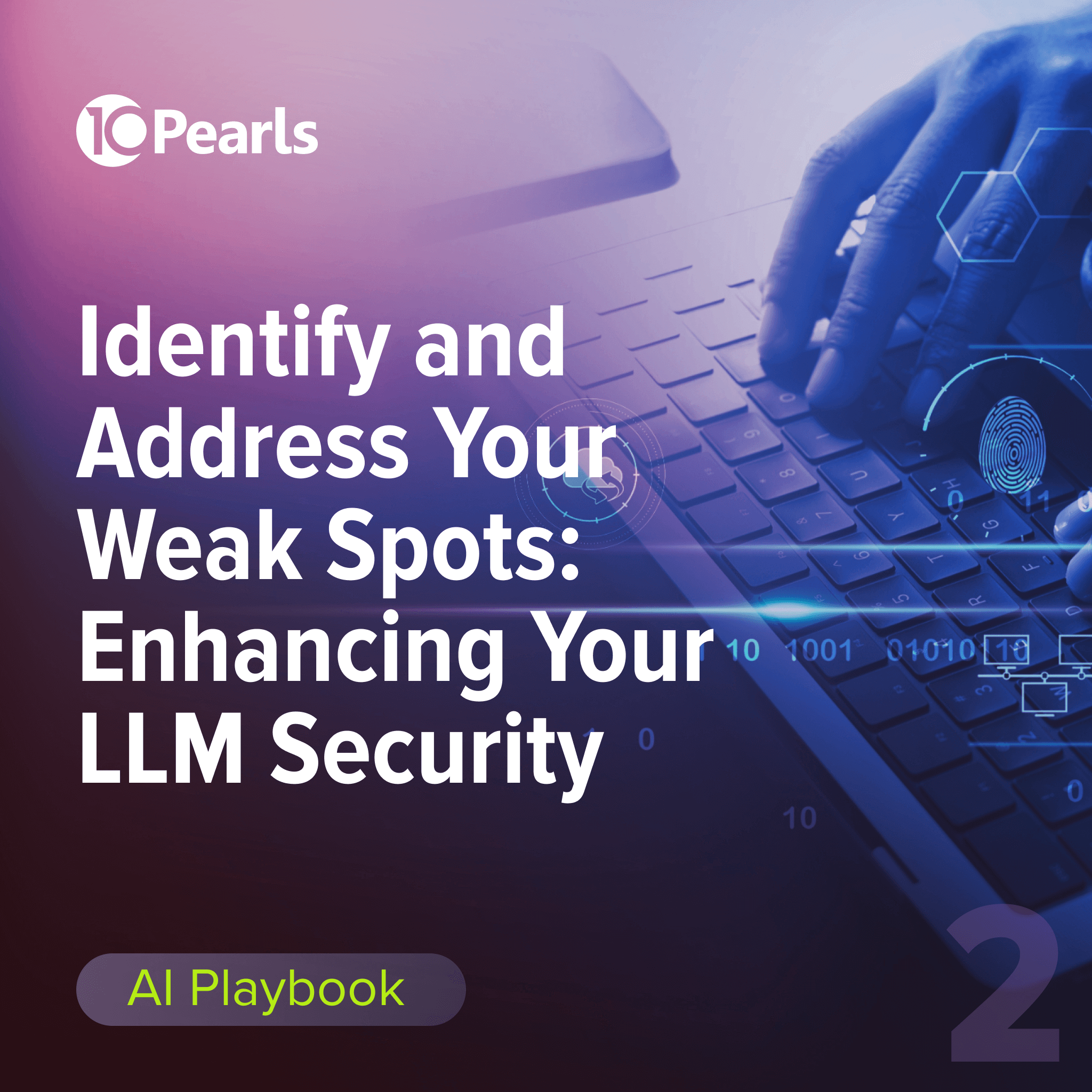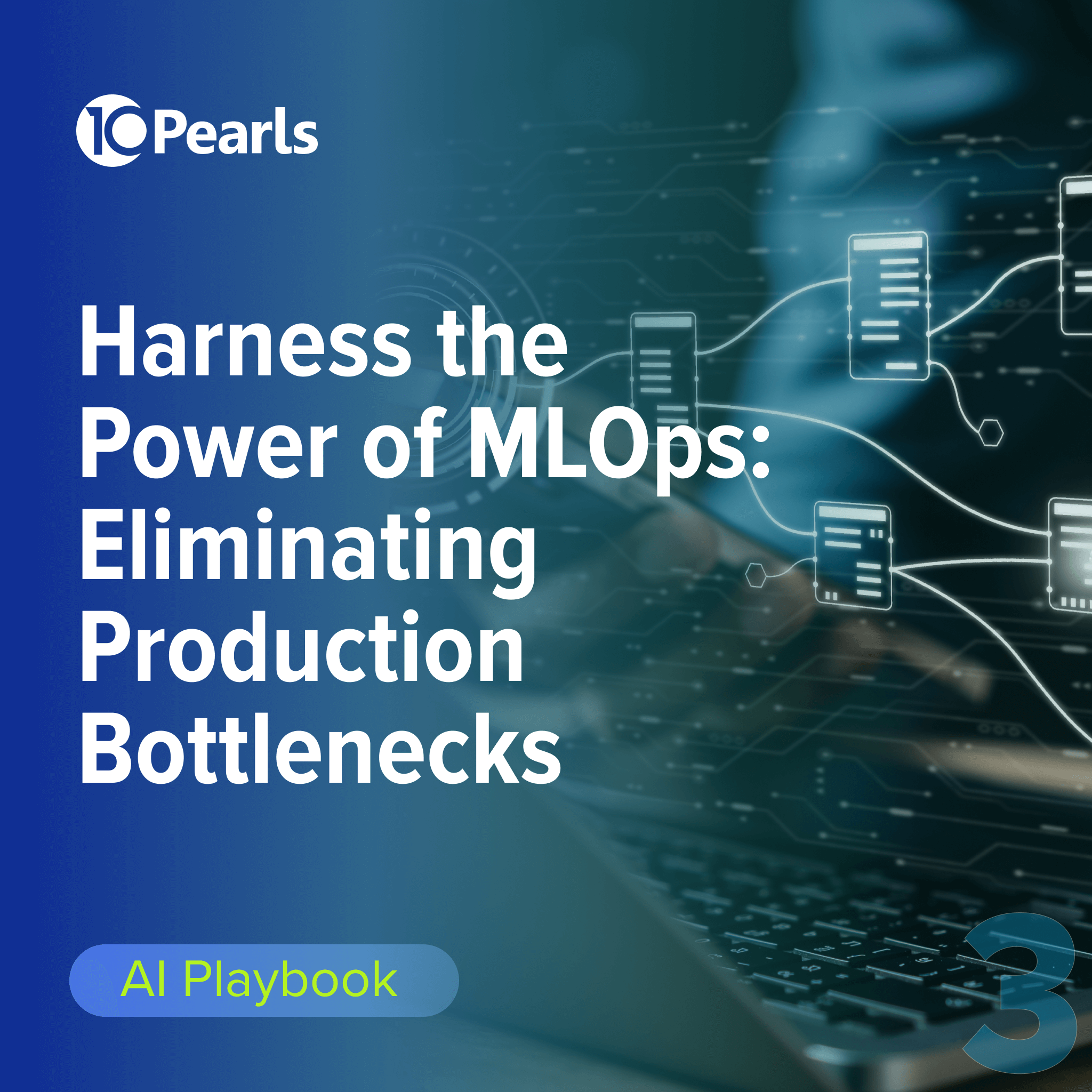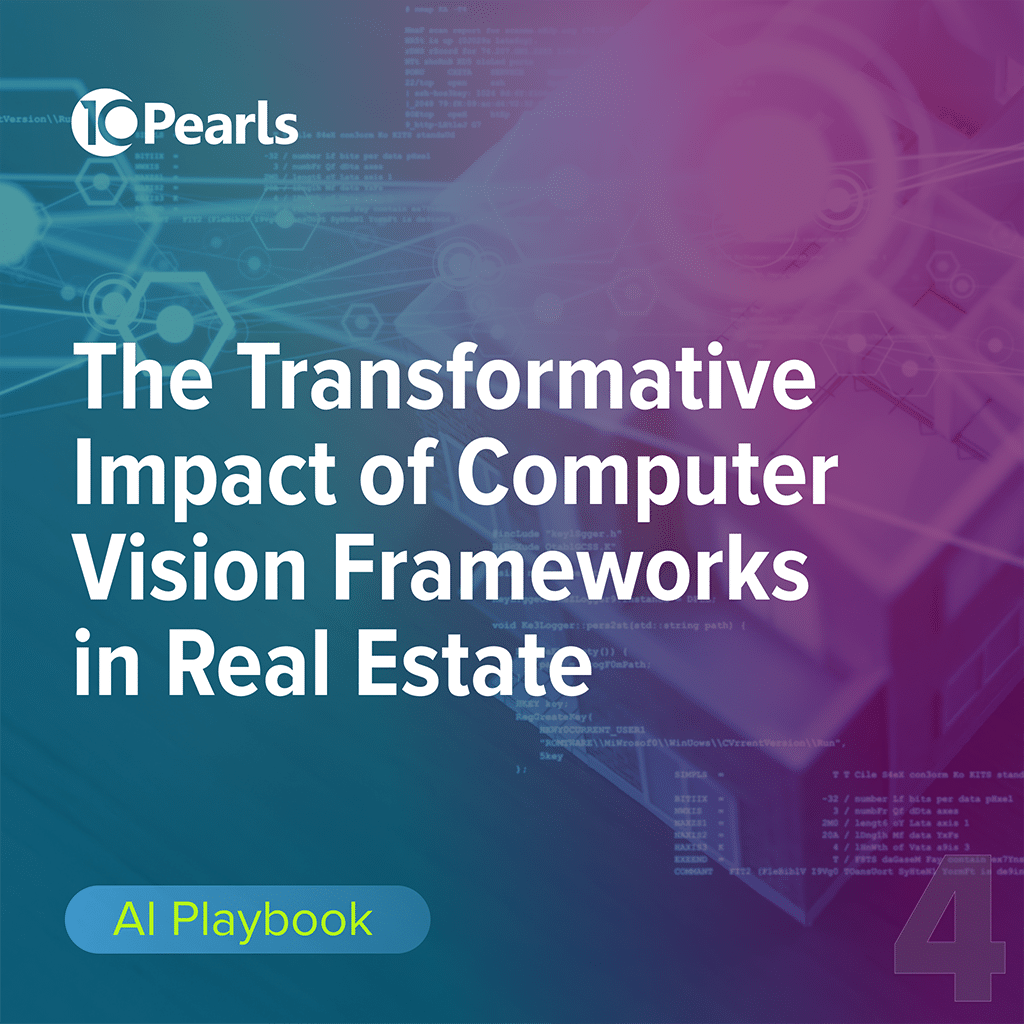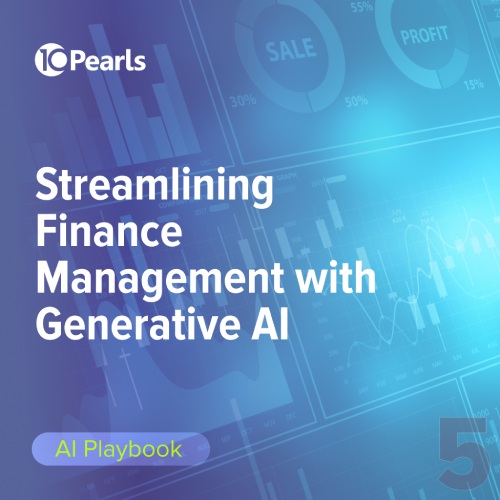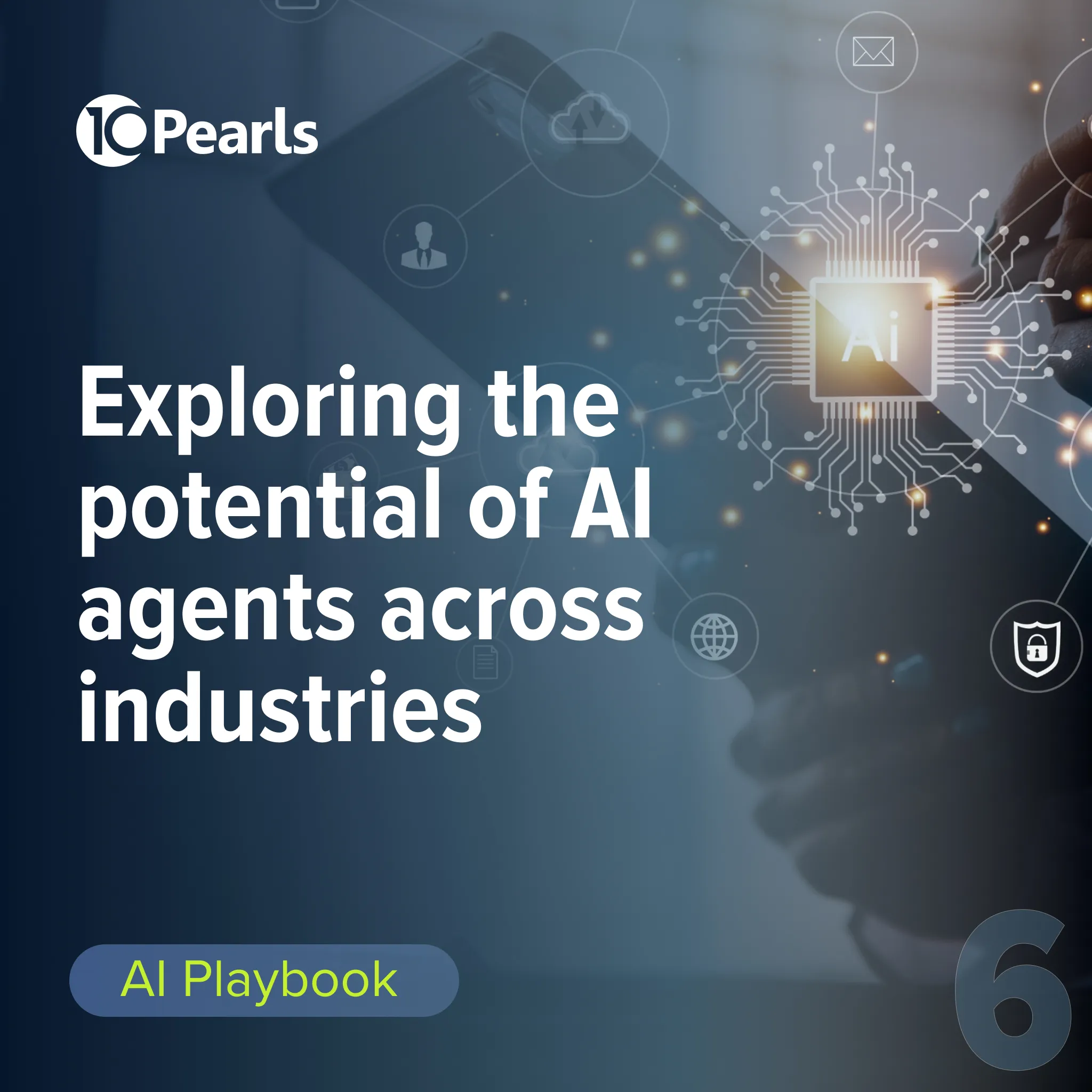Orchestrating the Future - Building Enterprise AI Agent Frameworks
By 10Pearls editorial team
A global team of technologists, strategists, and creatives dedicated to delivering the forefront of innovation. Stay informed with our latest updates and trends in advanced technology, healthcare, fintech, and beyond. Discover insightful perspectives that shape the future of industries worldwide.
Why enterprises need AI agent frameworks
Multi-agent systems are rapidly becoming the backbone of enterprise automation, representing a shift where fleets of AI agents can collaborate to handle complex workflows that were once managed by humans. These agents are transforming enterprise operations, moving beyond isolated tools to form an AI-enhanced workforce of intelligent agent systems that can collaborate autonomously or with human-in-the-loop configurations across business units.
However, managing and scaling multiple agents introduces new compliance, governance, and security challenges that traditional enterprise IT systems weren’t designed to handle.
Without defined and structured AI agent orchestration frameworks, implementing such systems risks creating more friction than progress. These frameworks establish standards for compliance, observability, scalability, and security.
This blog will cover the importance of enterprise AI agent frameworks in security, compliance, and observability contexts, components of typical AI agent frameworks, and their industry applications.

- Why enterprises need Al agent frameworks
- Adaptive resilience & scalability
- Anatomy of enterprise Al agent frameworks
- Agent registry
- Secure communication
- Policy enforcement
- Monitoring dashboard
- Workflow orchestration
- Industry applications
- How different industries are using enterprise Al agent frameworks
- Healthcare
- Financial services
- Telecommunications
- Energy
- Navigating the future of Al orchestration with 10Pearls
Why orchestration is critical for enterprise AI agents
When we talk about AI agent frameworks, this can apply to a single agent, covering everything from its LLM-powered reasoning core to the middleware that enables its permissions and access to external sources. A framework can also control how it reasons, makes decisions, takes actions, and how it communicates with humans and other AI agents.
In contrast, AI orchestration frameworks govern multi-agent configurations, ensuring they all work in tandem, improving enterprise workflows and processes. Careful AI agent orchestration is crucial not just for maximizing performance efficiency but to ensure compliance, security, and alignment across the entire enterprise AI agentic workforce.
Enterprise-grade multi-agent security
Multiple agents expand the AI security and compliance risk profile. Different agents have access to different tools, APIs, and other external sources, each with its own attack surface. Agents communicate and share data with each other and often have permission and functional hierarchies. Poisoning or controlling one can harm the entire system, and the impact can be enormous if the system has sufficient autonomy and access. Vulnerabilities in agent interactions, like feedback loops, can be used to exhaust resources or harm the reasoning process.
How to protect agents & their interactions
Orchestration enables both agent and “team” level security. Ensuring safe access to pre-approved tools/functions, sanitizing prompts, minimizing and redacting context for each agent to the necessary elements, and resource quotas/limits for each agent helps on an individual level. Zero-trust communication between agents, access isolation, and attribute-based access control (ABAC), data/decision lineage for each agent, and mechanisms to isolate suspect agents secure inter-agent interactions. These measures can prevent and limit the impact of a security breach.
Consistent regulatory compliance
Consistent interpretation and enforcement of compliance and policy across all agents is the most significant, overarching challenge of multi-agent systems. LLM-level compliance adherence helps, but each agent’s autonomy, access to different data sources, and independent interpretation of policy/compliance undermine that security layer. Handling compliance changes across geographies and purposes across agents is another challenge.
How policy-as-code keeps AI agents aligned with regulations
One way to solve the consistency challenge is by implementing policy-as-code in the orchestration layer – a single source of truth that all agents refer to. This prevents misaligned interpretations of compliance by individual agents, regardless of their external knowledge and reasoning sources. Region, industry, and use-case-specific compliance controls (CCPA, GDPR, HIPAA, SOX) are also handled at the orchestration layer. Several security controls, like access limitation, also help with compliance.
Full AI observability & traceability
AI observability and explainability become more complex in multi-agent setups. Enterprises need to observe the behavior of individual agents and of the system as a whole, covering inter-agent interactions, permission flows, dependencies, etc.
The complexity increases with levels of autonomy and external access of individual agents because the number of overall permutations of decision flow becomes too high. This raises the probability of unpredictable behavior.
How to gain visibility & traceability into agent operations
This is one of the reasons why AI agent development frameworks embed observability in individual agents and lay the groundwork for optimal visibility across multi-agent systems. Orchestrating the behavior of multiple agents requires keeping track of each agent’s behavior, including what external sources they accessed and how they prompted the LLM.
It is impossible to sufficiently probe the LLM that powers an agent’s semantic understanding and decision-making to fully explain why or how it arrived at a particular decision or generated certain results. But observing AI-specific metrics (tokens, response quality, latency), events, logs, and traces (collectively called the MELT data) can offer sufficient visibility on individual agent and system behavior. Good orchestration practices ensure that comprehensive observability data is available (ideally in real-time) and is tracked.
Adaptive resilience & scalability
Multiple AI agents can actually work in harmony, often very differently from the routine chaos of human teams. Ironically, this harmony and the fact that AI agents can be so tightly attuned to each other for an efficient “whole” is often what hurts their resilience and scalability.
Individual AI agents are typically good at adapting to changes in operating parameters. But in multi-agent systems, they are constrained by the behavior of the agent before them and the needs of the agent ahead of them in the workflow. This prevents single-agent adaptability from scaling to the team. Similarly, it’s easy to scale a multi-agent system for more of the same work but scaling it for new tasks and components in the workflow, then shared resources, hierarchies, flow, observability measures, and several other elements of the system have to change to handle scalability.
How to build flexible AI agent architectures
Enterprise AI agent frameworks must account for these challenges well before orchestration kicks in. Modular agent builds, loose dependencies, and decoupled agent connections up and down the workflow help achieve this by establishing strong inter–agent contracts that fill security and compliance gaps. This allows new agents to be added without disrupting the existing flow. Establishing overarching control and data planes that all agents refer to also makes the systems resilient and easily scalable. Other orchestration strategies, like using asynchronous queues instead of synchronous chains, help keep agents decoupled enough to react to changing parameters and additions.
Anatomy of enterprise AI agent frameworks
Below are some of the most common elements of an enterprise AI agent framework. They aren’t a standard “set” yet, but as multi-agent systems become more common and their structure is formalized, the following elements will likely serve as critical pillars.

Agent registry
Agent registries are becoming a common element of enterprise AI architectures. The term is used for two types of registries: one that keeps relevant information on all AI agents deployed across the organization, and the second, a system-specific registry that keeps detailed information on all the agents deployed within a multi-agent system.
The organization’s registry, sometimes called the agent catalog, keeps only high-level information on the agents, including their name, current state, owner, high-level purpose, policies it adheres to, and risk level. System-specific agent registries have all this data, including their dependencies, constraints, human-in-the-loop rules, external tools they can access, underlying models, and more.
High-level registries are important from a compliance and governance perspective, and system-level registries also offer performance, operational, cost, and other layers of visibility and control.
Secure communication
Securing inter-agent communication is a major step towards lowering system-wide vulnerability, but it’s more than just preventing data exchange and communication against external threats. It entails data integrity, availability, and authenticity (of sender and recipient agents). Another layer of orchestration complexity is that it must balance security with performance, because too many layers of security can delay responses.
However, agents don’t just talk to each other. They also connect with external data sources and call APIs, which may require additional communication security measures.
A zero-trust approach (where each interaction is verified), both between agents and between agents and external sources, is becoming a common practice, but there are others as well, such as establishing certification authorities (CA) that issue temporary certificates to agents that other agents can trust.
Policy enforcement
Policy, whether it’s internal or regulatory compliance, is usually enforced within an enterprise AI agent framework in three ways:
- Policy-as-Code (PAC): A policy engine compares each agent’s policy-relevant actions or requests against declarative policies. It’s possible to replace a policy engine with a rule-based system, though it’s far less flexible.
- Human-in-the-Loop (HITL): In ambiguous, high-risk, and complex scenarios where policy interpretation cannot be left to the AI, a human can enforce the policy on each decision/request.
- Local Rules: They can be applied to individual agents or, even more granularly, to their tool use and access.
Most intelligent agent architectures enforce policies using a combination of all three methods, with the possible exception of HITL in workflows that aren’t very compliance sensitive.
Monitoring dashboard
Dashboards can help a wide range of stakeholders observe the performance, compliance-adherence and behavior of AI agents both individually and in a multi-agent system, allowing for better orchestration decisions. From a performance perspective, they can help you identify bottlenecks, agents with the lowest/highest latency and throughput numbers, and the overall impact of the system and the individual impact of an agent within the system for granular ROI measurement.
Data consolidation and visualization, especially in real-time, allows for proactive course correction. However, the effectiveness and impact rely heavily upon the data-to-dashboard pipelines and tracking logic. Trying to observe too many variables at once might blur the necessary information, so it’s important to identify the critical ones. Notably, a few AI agents working in tandem can generate insights and power this dashboard as well, simplifying the information for humans.
Workflow orchestration
Multiple agents, each performing a single function or set of functions, can only manage slices of a complex workflow. It is the job of the orchestrator agent or system (based on your framework) to ensure that they collectively complete the workflow or serve the workflow goals. Multi-agent systems can be both centralized and decentralized, but they all have some form of orchestration, including emergent, which may evolve naturally from multiple autonomous AI agents working toward shared goals.
Workflow orchestration helps agents stay aligned with goals and collaborate effectively, even across different environments. Designing and implementing agent orchestration frameworks requires specialists and system architects familiar with both AI agents behavior and workflow design. Once it’s implemented, the orchestrator agent/system takes over workflow coordination with HITL for select functions, though the system is monitored for both performance and compliance.
Industry applications
Robust, well-designed and carefully managed enterprise AI agent frameworks can transform operations in virtually all industries. They can augment or, in some cases, take over complete workflows with minimal human intervention required, allowing for unprecedented efficiency and productivity gains and significantly enhanced scalability potential.
How different industries are using enterprise AI agent frameworks
Healthcare
Healthcare multi-agent systems will require strong policy-as-code implementation, especially for the following use cases, where sensitive patient data is exchanged among agents and between agents and external sources:
- Patient scheduling
- Electronic Health Records (EHR) management
- Treatment personalization
Financial services
The financial industry has been an early adopter of AI, driven by the availability of massive amounts of structured data and well-defined regulatory boundaries. Apart from data security, financial sector businesses must also account for bias mitigation and adherence to fiduciary responsibilities in their AI orchestration. The use of AI for financial services (often through multi-agent systems) is already gaining traction for the following use cases:
- Fraud detection
- Portfolio management
- Financial advice
Telecommunications
AI agents have been gamechangers for telecom organizations, not just for reducing the cost and increasing efficiency of their customer service segments but for unlocking operational efficiencies as well. Complex multi-agent teams are already improving the following functions:
- Network optimization
- Maintenance automation
- Customer service
Energy
The energy sector is deploying individual AI agents across multiple operational nodes and orchestrating cohesive workflows within a wide range of business functions, including:
- Grid optimization
- Failure prediction
- Trading operations
Navigating the future of AI orchestration with 10Pearls
Intelligent and effective orchestration is about more than functional and productivity gains. It’s about ensuring responsible AI use in an enterprise by providing the appropriate controls and guardrails. Well-architected orchestration maximizes the potential of individual agents and transforms them into powerful systems that enable complex automations, unlock operational efficiencies, and accelerate innovation.
As an end-to-end custom AI solution development partner, the 10Pearls team helps enterprises design and deploy scalable AI agent orchestration frameworks aligned with strategic business objectives. By combining expertise in system integrations, AI architecture and data governance, we ensure that agent systems operate reliably and efficiently to drive measurable business impact.
Contact 10Pearls to build your scalable AI agent orchestration framework.

Get in touch with us
Related articles

